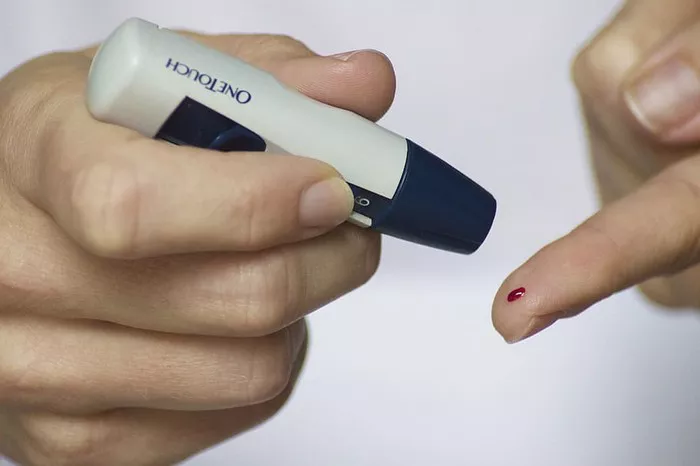Type 2 diabetes is a chronic condition characterized by insulin resistance and high blood sugar levels. Unlike type 1 diabetes, which is typically diagnosed in childhood and requires insulin therapy for survival, type 2 diabetes is often preventable and manageable through lifestyle modifications, particularly diet and exercise. In this article, we will delve into the causes, symptoms, and management strategies for type 2 diabetes, with a specific focus on dietary considerations.
What is Type 2 Diabetes?
Type 2 diabetes occurs when the body becomes resistant to the effects of insulin, a hormone produced by the pancreas that helps regulate blood sugar levels. As a result, glucose builds up in the bloodstream, leading to hyperglycemia. Over time, uncontrolled diabetes can damage blood vessels and organs, increasing the risk of heart disease, stroke, kidney failure, and other serious complications. Common symptoms of type 2 diabetes include increased thirst, frequent urination, fatigue, blurred vision, and slow wound healing.
The Role of Diet in Managing Type 2 Diabetes
Diet plays a pivotal role in managing type 2 diabetes. By making healthy food choices, individuals can improve blood sugar control, reduce the risk of complications, and enhance overall well-being. The cornerstone of a diabetic diet is controlling carbohydrate intake, as carbohydrates have the most significant impact on blood sugar levels. It is essential to choose complex carbohydrates that are rich in fiber and nutrients and to limit simple sugars and refined grains.
Understanding Glycemic Index (GI)
The glycemic index (GI) is a scale that ranks carbohydrate-containing foods based on their effect on blood sugar levels. Foods with a high GI are rapidly digested and cause a sharp increase in blood glucose, while those with a low GI are digested more slowly, resulting in a gradual rise in blood sugar. For individuals with type 2 diabetes, choosing foods with a low to moderate GI can help stabilize blood sugar levels and prevent spikes and crashes.
Fruits Suitable for Type 2 Diabetes
When it comes to fruit consumption, not all fruits are created equal for individuals with type 2 diabetes. While fruits are rich in vitamins, minerals, and antioxidants, some varieties are higher in sugar and can cause blood sugar spikes. It is essential to choose fruits with a low to moderate GI and to consume them in moderation. Examples of fruits that are generally safe for individuals with type 2 diabetes include berries, apples, pears, citrus fruits, and stone fruits like peaches and plums.
Portion Control and Moderation
Even healthy fruits can impact blood sugar levels if eaten in large quantities. Therefore, portion control is key when incorporating fruits into a diabetic diet. Aim to consume smaller servings of fruit and pair them with protein or healthy fats to slow down the absorption of sugars. For example, enjoy a small apple with a handful of almonds or Greek yogurt for a balanced snack that won’t cause a rapid spike in blood glucose.
Best Practices for Incorporating Fruits into a Diabetic Diet
Incorporating fruits into a diabetic diet can be both delicious and nutritious with the right approach. Here are some practical tips for including fruits in your meals and snacks:
Add berries to your morning oatmeal or yogurt parfait for a burst of flavor and antioxidants.
Blend up a green smoothie with spinach, kale, avocado, and a small amount of low-GI fruits like berries or half a banana.
Use sliced fruit as a topping for whole grain toast or whole wheat pancakes instead of syrup or jam.
Enjoy fruit as a dessert option by pairing it with a small serving of dark chocolate or a dollop of whipped cream.
Fruits to Limit or Avoid
While many fruits are suitable for individuals with type 2 diabetes, there are some varieties that should be consumed sparingly or avoided altogether due to their high sugar content or high GI scores. Examples of fruits to limit or avoid include dried fruits, such as raisins and dates, as well as tropical fruits like pineapple and mango. These fruits can cause rapid spikes in blood sugar levels and may not be well tolerated by individuals with diabetes.
Conclusion
Managing type 2 diabetes requires a holistic approach that includes regular exercise, medication management, and dietary modifications. By making smart food choices and incorporating fruits into your meals and snacks in moderation, you can better control your blood sugar levels and improve your overall health and well-being. Remember to consult with a healthcare professional or registered dietitian for personalized dietary recommendations tailored to your individual needs and medical history. With the right guidance and support, you can successfully manage your type 2 diabetes and live a full and active life.
Related Topics:
What Can Type 1 Diabetics Not Eat?



























